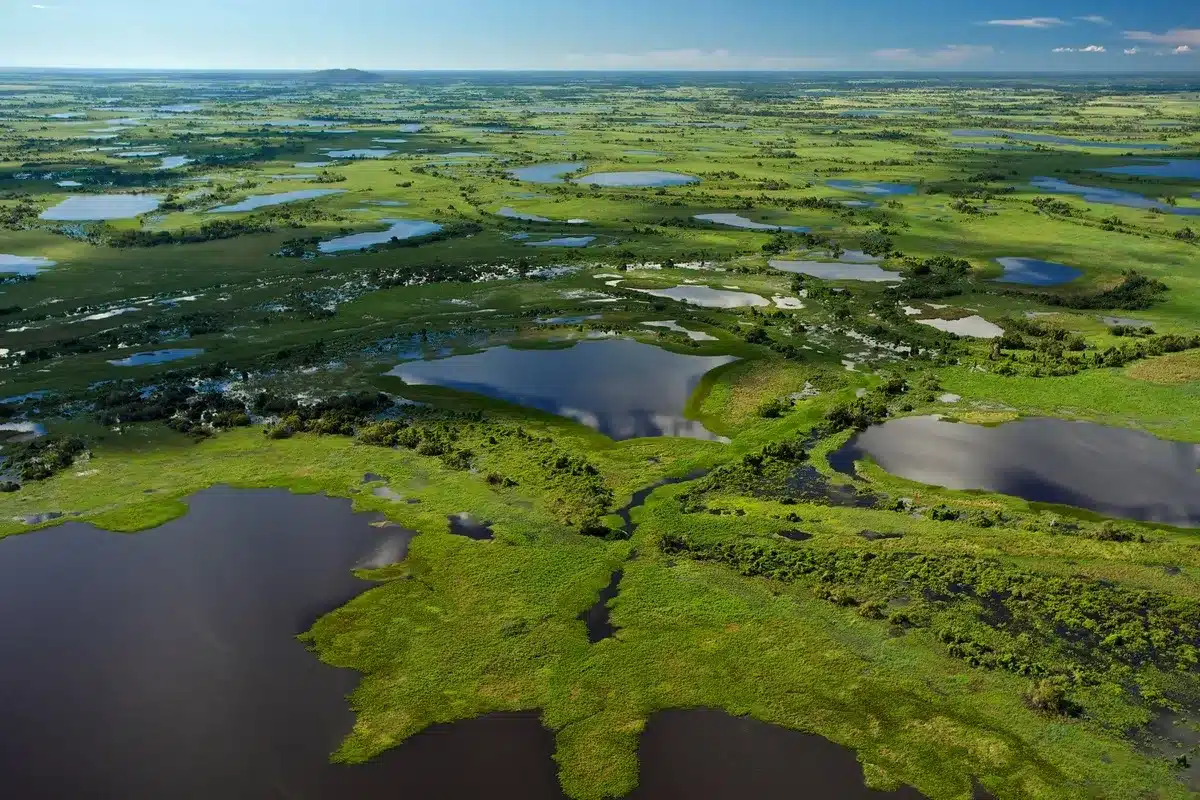About Pantanal Wetland:
- It is the world’s largest tropical wetland.
- Location:
- It is located in the upper Paraguay River basin, the Pantanal straddles Brazil’s border with Bolivia and Paraguay.
- About 80 percent of the Pantanal is in Brazil.
- It’s a 185,000-square-kilometer (71,000-square-mile) mosaic of grassland swamps fed byrivers, streams, and seasonal floods and dense, low-forested savanna.
- It was developed in a structural basin formed as the Andes Mountains rose.
- The climate is tropical, wet, and dry.
- It is one of the most biologically rich environments on the planet, with more than 4,700 plant and animal species.
- Fauna:
- Noteworthy animals include the jaguar, giant otter, giant armadillo, marsh deer, pampas deer, and hyacinth macaw (the biggest parrot on the planet).
- It has the largest concentration of crocodiles in the world, with approximately 10 million caimans.
- In 2000, the United Nations Educational, Scientific, and Cultural Organization (UNESCO) declared a small portion of the Pantanal a World Heritage Site.
- Around 95% of the Pantanal is under private ownership, the majority of which is used for cattle grazing.
Q1: What is a UNESCO World Heritage?
A World Heritage Site (WHS) is a landmark or area with legal protection by an international convention administered by UNESCO under the UNESCO World Heritage Convention, established in 1972. These sites are designated by UNESCO for having cultural, historical, scientific or other forms of significance.
Source: Fire Ravages World’s Largest Tropical Wetland in Brazil | Residents Call Pantanal Wetland an Inferno
Last updated on June, 2025
→ UPSC Notification 2025 was released on 22nd January 2025.
→ UPSC Prelims Result 2025 is out now for the CSE held on 25 May 2025.
→ UPSC Prelims Question Paper 2025 and Unofficial Prelims Answer Key 2025 are available now.
→ UPSC Calendar 2026 is released on 15th May, 2025.
→ The UPSC Vacancy 2025 were released 1129, out of which 979 were for UPSC CSE and remaining 150 are for UPSC IFoS.
→ UPSC Mains 2025 will be conducted on 22nd August 2025.
→ UPSC Prelims 2026 will be conducted on 24th May, 2026 & UPSC Mains 2026 will be conducted on 21st August 2026.
→ The UPSC Selection Process is of 3 stages-Prelims, Mains and Interview.
→ UPSC Result 2024 is released with latest UPSC Marksheet 2024. Check Now!
→ UPSC Toppers List 2024 is released now. Shakti Dubey is UPSC AIR 1 2024 Topper.
→ Also check Best IAS Coaching in Delhi






















